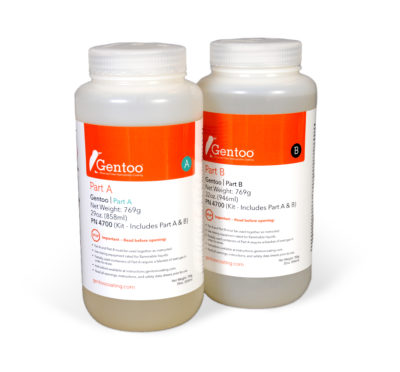Introduction
 Landing gear are flight- and safety-critical items. The metals used to produce landing gear are prone to corrosion when the surface is marred or damaged. Like other aircraft components, corrosion and damage on landing gear has the potential for catastrophic failure and must be minimized or eliminated. Currently, mitigation of corrosion on United States Air Force (USAF) landing gear is accomplished using various types of coatings, including sacrificial plating (cadmium, low hydrogen embrittlement zinc-nickel [LHE Zn-Ni]), barrier plating (chromium, HVOF, nickel, anodization, etc.) and chromated primer/paint combinations.
Landing gear are flight- and safety-critical items. The metals used to produce landing gear are prone to corrosion when the surface is marred or damaged. Like other aircraft components, corrosion and damage on landing gear has the potential for catastrophic failure and must be minimized or eliminated. Currently, mitigation of corrosion on United States Air Force (USAF) landing gear is accomplished using various types of coatings, including sacrificial plating (cadmium, low hydrogen embrittlement zinc-nickel [LHE Zn-Ni]), barrier plating (chromium, HVOF, nickel, anodization, etc.) and chromated primer/paint combinations.
Under operational conditions, landing gear are subject to numerous damage modes including abrasion/impact damage due to foreign object debris (FOD), rain, sand and dust erosion, runway debris, mechanical abrasion, etc. which remove the corrosion protective coatings, exposing the underlying bare metal. In addition, water pooling on plating/painted surfaces and threaded parts can promote corrosion. Ultimately, repairing or replacing landing gear parts due to corrosion is a significant maintenance cost, particularly with obsolete replacement parts in aging aircraft.
There is a critical need for advanced multi-functional coating technologies that are easily applied, cost-effective, mechanically durable, and more corrosion resistant than those currently available. Such coating technologies will shed water and corrosion initiators, be durable and abrasion/impact resistant and, as a result, provide longer-term corrosion protection of the steel and aluminum that comprise landing gear. These properties will enable reuse of parts instead of replacement, extend part lifetimes, reduce depot maintenance expense and reduce or eliminate hazardous waste (Cr, Cd) disposal costs and increase reliability and readiness of USAF assets.
 Gentoo is a durable hydrophobic surface treatment system, to meet this need. Gentoo has shown exceptional durability and ability to shed water and other fluids (jet fuel, transmission fluid, deicing fluid) and has led to a significant improvement in both the delay and lower rate of corrosion over that of current United States Military qualified (MIL) paint and plating. This reduction in corrosion will directly translate to cost savings through decreased maintenance of landing gear components, and reduced rejection of corroded parts.
Gentoo is a durable hydrophobic surface treatment system, to meet this need. Gentoo has shown exceptional durability and ability to shed water and other fluids (jet fuel, transmission fluid, deicing fluid) and has led to a significant improvement in both the delay and lower rate of corrosion over that of current United States Military qualified (MIL) paint and plating. This reduction in corrosion will directly translate to cost savings through decreased maintenance of landing gear components, and reduced rejection of corroded parts.
The hydrophobic surface treatment is comprised of a transparent, hybrid organic-inorganic matrix based on silane-modified polymer chemistry. The surface treatment combines the flexibility, impact resistance, durability, abrasion resistance, corrosion protection, and UV resistance of commercially available organic polymer coatings combined with low surface energy for enhanced water-shedding performance.
The ultra-thin (<5 µm), rapid-cure, single-coat system has been applied to previously painted, bare metallic and polymeric surfaces using common application techniques such as flow coat, brush or spray. The high optical transparency of the hydrophobic treatment does not alter the appearance of target substrates, but enhances watershed capability, improves corrosion resistance, resists mechanical abrasion and impact damage, reduces salt accumulation, and resists weathering degradation of the object.
